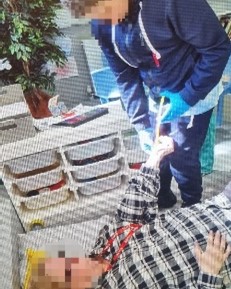The process I went through was firstly I did a questionnaires and observations on each of the children in my care to see where they were in terms of their learning and behaviour. I took on board their interests and decided to look at activities
I spoke to several members of staff and ran my ideas past them for any suggestions and ideas. After observing the children I noticed that role play was a big thing for them and I realised I had to go with this. During their play I had noticed that all the play was very negative, negative language, behaviour, there was always someone with a gun and 9 times out of 10 the play would end up in a fight which made the children and atmosphere very tense. I decided to take this play and get involved by modelling positive behaviours, positive language and I guided them into situations and gave them the language and resources to deal with the situations.
Together we started to make resources to go along with our role play and late on decided to add themed play in, like Star Wars and Harry Potter. Occasionally this ended in fighting, but it was non-contact and we would change the language from negative to positive, my involvement helped to keep it from getting out of control as I was able to change the dynamic and take the lead when I felt it was necessary. The children were interacting together and able to listen and take on board other people advice, which wasn’t something that was possible beforehand.
During the project the children didn’t respond to Lego as much as I had hoped. We tried to do Lego sessions but as I hadn’t been able to do a Lego therapy course, the children and I lost interest. So we started to play games like top trumps as again this was from their interests and their lead. These 10 minute games were fantastic because it was all about turn taking, winning, loosing, reading and numeracy.
I realised quickly that if an activity wasn’t working for whatever reason, it was important to change it before the children get angry. Top trumps worked out really well for us and it is a game that the children activity play without any adult intervention now. During the process, observation and discussion was a key part. We needed to as a staff team continue our communication and observe.




